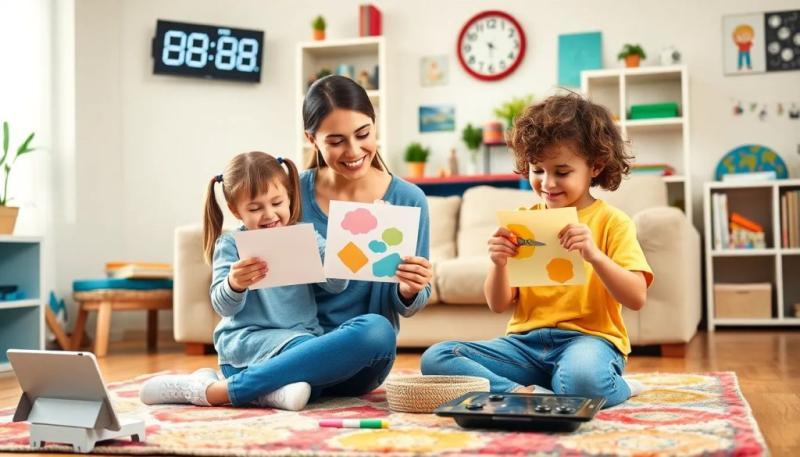Establishing clear screen time rules is essential for the digital well-being of children. Effective communication between parents and babysitters helps create a supportive environment for kids. This article provides valuable insights on how to help babysitters manage screen time rules effectively.
How can caregivers effectively communicate screen time rules?
Communication is key when it comes to managing screen time. Caregivers should initiate open discussions about screen time expectations before any babysitting begins. This ensures everyone is on the same page about what is acceptable and what is not.Regular check-ins can enhance this communication. Scheduling a time to discuss any changes in screen time rules or addressing issues that arise can foster transparency. It's important that caregivers feel comfortable asking questions or expressing concerns about how screen time is handled.Furthermore, utilizing a shared document or app to keep track of screen time can be beneficial. This way, both parents and babysitters can update and consult on screen time usage, helping everyone stay informed and aligned.What are the recommended screen time limits by age?
Screen time recommendations vary significantly based on a child's age. The following guidelines can help caregivers set reasonable limits:- Under 2 years: Avoid screen time except for video chatting.
- 2 to 5 years: Limit screen time to one hour of high-quality programming per day.
- 6 years and older: Set consistent limits to ensure it does not interfere with sleep, physical activity, and other healthy behaviors.
- Teenagers: Encourage balanced use of technology, allowing time for homework, socializing, and other interests.
How to align family tech rules with caregivers?
Aligning family tech rules with caregivers can create a unified approach to screen time. To achieve this, families should hold meetings with caregivers to discuss values and expectations around technology use.One strategy is to create a family technology agreement. This document outlines the screen time rules, responsibilities, and consequences for violations. Both parents and babysitters should sign it to signify their commitment.Additionally, involving children in these discussions can help them understand the reasoning behind the rules. This engagement can lead to better compliance, as children feel they have a say in their screen time limits.Finally, revisiting these rules periodically allows for adjustments based on children's growth and changing technological landscapes. Keeping the conversation open ensures that everyone remains aligned and that the guidelines stay relevant.What should be included in screen time guidelines?
When developing screen time guidelines, several key components should be included:- Time limits: Specify the maximum amount of screen time allowed each day.
- Content guidelines: Indicate what types of content are appropriate for children.
- Screen-free zones: Identify areas where screens are not allowed, such as dining rooms or bedrooms.
- Family activities: Encourage participation in tech-free activities to promote balance.
How to encourage positive tech habits in children?
Fostering positive technology habits in children involves several strategies:First, lead by example. Parents and caregivers should demonstrate healthy screen habits themselves. Children often mimic the behavior of adults, so it's essential to model balanced technology use.Second, introduce alternatives to screen time. Encouraging outdoor play, reading, and creative activities can help children develop interests outside of technology. Engaging children in tech-free activities fosters a more holistic approach to their development.Third, use technology as a tool for learning. Encourage children to explore educational apps or websites that promote critical thinking and creativity, making screen time constructive rather than purely recreational.Lastly, maintain open dialogues about technology. Discussing what children are experiencing online and the importance of digital citizenship helps them navigate the digital landscape responsibly.What strategies help manage excessive screen use?
Managing excessive screen use can be challenging, but several strategies can help:- Set clear boundaries: Establish and communicate specific rules regarding screen use.
- Encourage breaks: Implement regular breaks during screen time to promote physical activity and reduce strain.
- Use timers: Setting timers can help children understand when to stop using devices.
- Designate screen-free times: Create tech-free periods during meals or before bed.
Questions related to managing screen time
What are the 3 C's of screen time?
The 3 C's of screen time refer to Content, Context, and Child. Understanding these components can significantly enhance how screen time is managed. - Content involves what children are watching. Parents should focus on age-appropriate and educational content that aligns with their values.- Context refers to the environment in which screen time is used. It's important to consider whether screens are used during meals, with family, or in isolation.- Child emphasizes the individual needs of each child. Every child is different, and tailoring screen time based on their maturity and personality can lead to healthier habits.What is the 30 30 30 rule for screen time?
The 30 30 30 rule is a guideline suggesting that for every 30 minutes spent on a screen, children should take a 30-minute break to engage in non-screen activities. This rule promotes balance and helps reduce eye strain and sedentary behavior.This approach encourages children to participate in physical activities or creative hobbies, thus creating a more well-rounded daily routine. It's essential for parents to implement this rule consistently.Additionally, this rule reinforces the idea that screen time should not dominate a child's daily life, allowing for a more enriching environment that encourages diverse interactions.How to discipline kids while babysitting?
Disciplining kids while babysitting requires a gentle yet firm approach. Setting clear expectations at the beginning is crucial. Caregivers should communicate the rules and consequences upfront to establish a framework for behavior.Using positive reinforcement can also be effective. Acknowledging good behavior encourages children to repeat those actions. Parents can work with caregivers to determine appropriate rewards, such as extra screen time or small treats.If problems arise, addressing them calmly and privately is essential. This helps maintain a positive rapport with the child while reinforcing the importance of respecting boundaries and rules.What is the 3 6 9 12 rule for screen time?
The 3 6 9 12 rule suggests appropriate screen time limits based on children's ages. It recommends that:- 3 hours for children aged 3 and under- 6 hours for ages 6 and under- 9 hours for ages 9 and under- 12 hours for teenagersWhile these numbers can vary depending on individual circumstances, they offer a structured approach to limit screen time. Parents and caregivers should adapt these recommendations based on the child's activity level and needs, ensuring that screen time does not interfere with other important aspects of their development. Establishing effective screen time rules is crucial for children's well-being. By focusing on communication, setting clear guidelines, and encouraging positive habits, both parents and caregivers can work together to manage screen time effectively.En este sentido, te invitamos a ver un video que ofrece consejos prácticos sobre cómo ayudar a los cuidadores a gestionar las reglas de tiempo frente a la pantalla.





